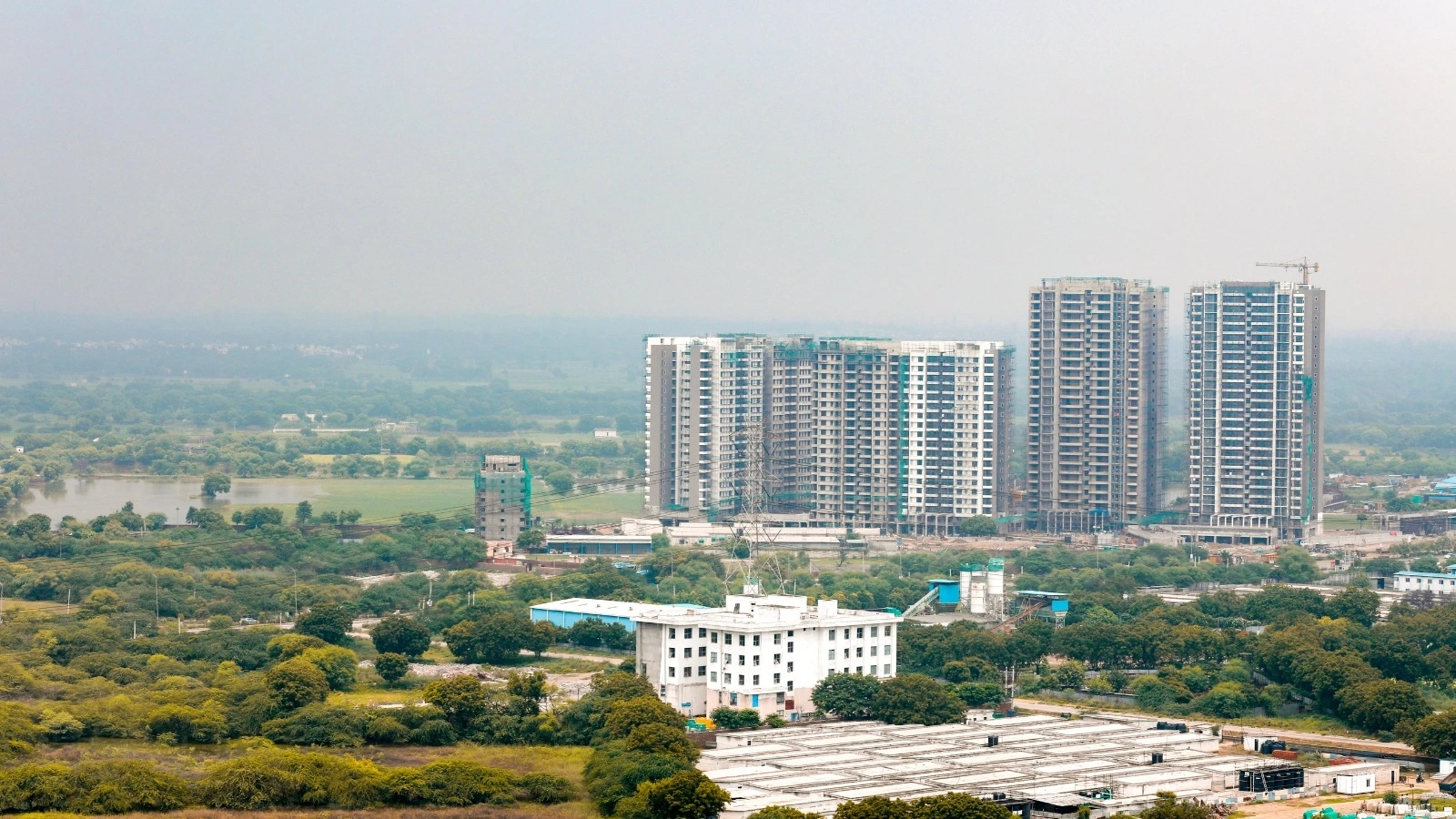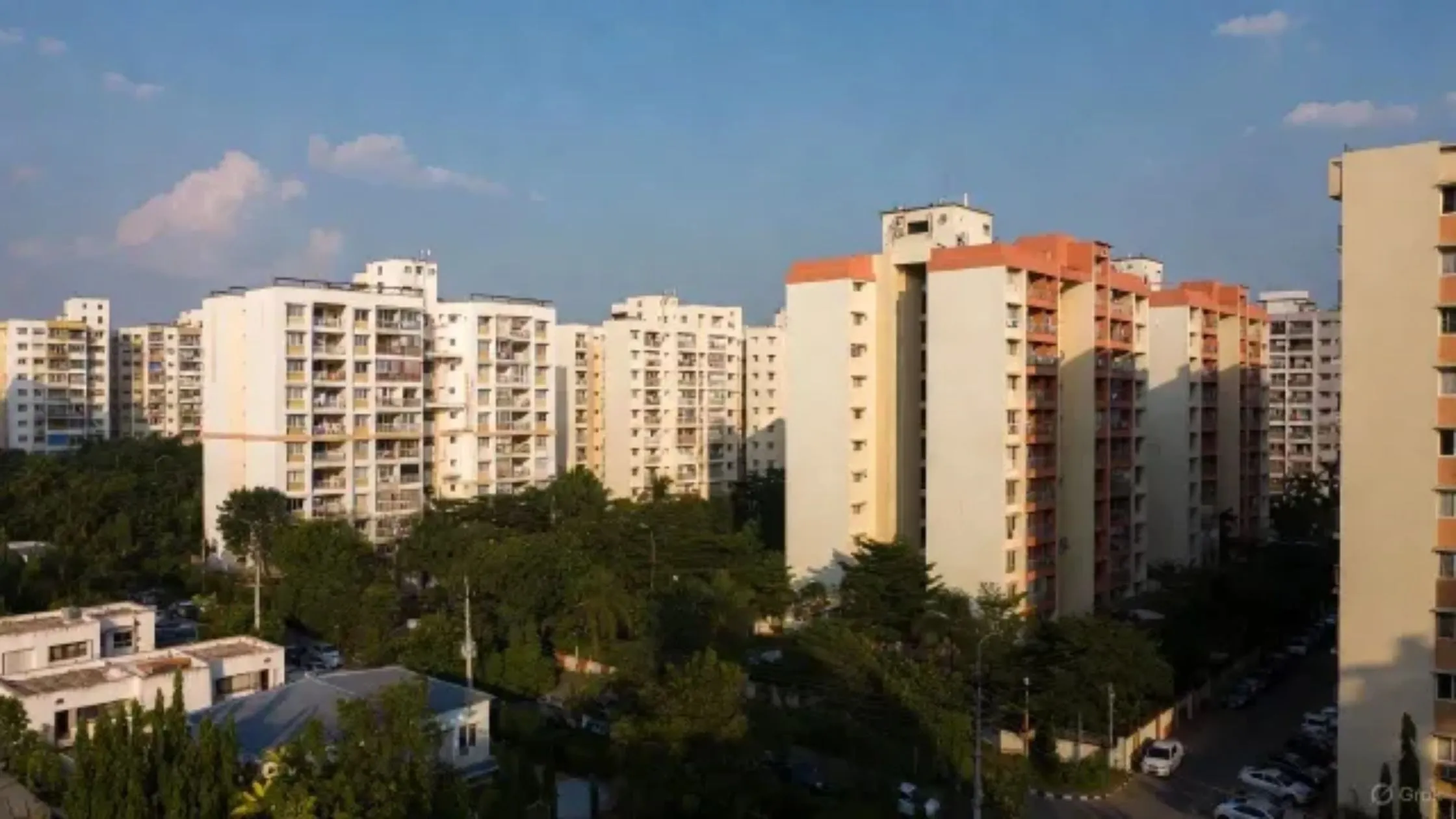Table of Content
India’s commercial real estate sector continues to display strong fundamentals, with office rentals across the top seven cities rising by 6% in the first nine months of 2025. According to the latest Anarock Research data, average monthly rentals have increased from ₹85 per sq ft in 9M 2024 to ₹90 per sq ft in 9M 2025. The consistent uptrend signals the resilience of the Indian office market, powered by steady corporate demand, expanding Global Capability Centers (GCCs), and the growing co-working ecosystem.
Office Rentals Rise 6% Across Top Cities
The Indian office segment has seen one of its most stable growth periods in recent years. Office rentals climbed 6% year-on-year, led by strong absorption and improving tenant confidence. While the overall leasing momentum has been healthy, cities such as Bengaluru, Delhi-NCR, and Mumbai Metropolitan Region (MMR) have particularly driven the upward movement.
The rental increase is attributed to a combination of factors steady occupier demand, limited Grade A office supply in core business districts, and the continued return of employees to physical offices. In many micro-markets, especially tech-driven hubs like Whitefield in Bengaluru and Bandra-Kurla Complex (BKC) in Mumbai, landlords have been able to command higher rents due to tight vacancy levels and sustained demand from large corporates.
Also Read: Housing Sales in Jan–Sep 2025 Drop 12% Across Top Cities; Pune, Chennai Show Growth
Declining Vacancy Rates Indicate Strong Demand
The overall vacancy level across India’s top seven cities dropped marginally from 16.7% in 9M 2024 to 16.2% in 9M 2025, signaling strengthening tenant activity. Chennai recorded the lowest vacancy rate at 8.9%, underscoring the city’s growing prominence as a stable and cost-effective office destination.
Here’s a quick snapshot of office vacancy rates across top Indian cities:
|
City |
9M 2025 Vacancy (%) |
9M 2024 Vacancy (%) |
|
12.20% |
13.00% |
|
|
14.90% |
14.80% |
|
|
22.00% |
23.30% |
|
|
8.90% |
9.40% |
|
|
26.50% |
26.60% |
|
|
11.85% |
11.50% |
|
|
17.80% |
18.30% |
|
|
PAN India |
16.20% |
16.70% |
The decline in vacancy rates reflects expansion by GCCs and IT/ITeS companies, which continue to anchor the market. Developers are witnessing consistent leasing interest in newer commercial corridors, while older Grade A assets are seeing minimal churn. For landlords and investors, the lower vacancy environment suggests healthy rental growth potential in 2026.
City-Wise Office Absorption Trends
The demand for office rentals varied by city, with some markets outperforming others. Pune led with the highest growth in net office absorption a remarkable 97% jump from 3.14 million sq ft in 9M 2024 to 6.2 million sq ft in 9M 2025. The rise was fueled by strong demand from IT, co-working, and manufacturing firms setting up regional hubs.
Bengaluru maintained its position as India’s top office market, recording nearly 9.95 million sq ft of net leasing, followed by Delhi-NCR at 8.2 million sq ft and MMR at 6.6 million sq ft. These three markets collectively accounted for over 60% of total leasing during the period. Meanwhile, Kolkata was the only city to register a 19% decline in net office leasing, primarily due to limited new supply and subdued occupier movement.
Across cities, new business corridors, infrastructure upgrades, and flexible workspace demand have reshaped leasing patterns, extending the commercial footprint beyond traditional CBDs.
GCCs Drive a Major Share of Office Leasing
Global Capability Centers have emerged as one of the largest demand drivers in India’s commercial property market. In 9M 2025 alone, GCCs accounted for over 40% of the total office leasing around 23.34 million sq ft out of 58.28 million sq ft of gross absorption.
Bengaluru led GCC leasing with 8.3 million sq ft, followed by Pune (3.73 million sq ft) and Chennai (3.57 million sq ft). This surge in demand highlights India’s growing importance as a global operational hub, offering skilled talent, cost efficiency, and robust infrastructure. The GCC expansion wave is expected to further tighten office rentals in key micro-markets, especially where supply pipelines remain limited.
New Office Supply Sees a 15% Annual Jump
The supply side also witnessed notable activity, with new office completions rising 15% year-on-year from 34.07 million sq ft in 9M 2024 to 39.21 million sq ft in 9M 2025. Pune once again led the growth with an impressive 168% jump in new completions, followed by significant additions in Bengaluru.
Bengaluru recorded the highest new supply of 10.41 million sq ft, while Pune contributed 9.2 million sq ft. In contrast, Hyderabad and MMR saw declines of 39% and 41%, respectively, as developers focused on project consolidation and absorption of existing inventory. The rise in supply is expected to balance demand in select micro-markets, ensuring office rentals remain stable in 2026 even as demand continues to expand.
Also Read: Office Leasing in India 2025: Bengaluru, Delhi-NCR, and Mumbai to Drive 50 Million Sq Ft Demand
Sectoral Demand: IT, Co-working, and BFSI Lead the Way
Sector-wise, the IT/ITeS industry maintained its leadership position, accounting for 27% of total office leasing. Co-working operators followed closely with a 23% share up from 21% a year earlier reflecting a clear shift toward flexible workspaces. BFSI firms also expanded their footprint, contributing 18% of total leasing activity.
The growing popularity of hybrid work models has given co-working spaces a strong push, especially in cities like Bengaluru, Pune, and Chennai. Meanwhile, IT and GCC occupiers continue to be the backbone of leasing demand, driving consistent growth in office rentals across prime business districts.
Conclusion
Looking ahead, India’s office market appears poised for continued expansion. The combination of GCC-driven demand, strong domestic enterprise growth, and improving infrastructure connectivity will likely sustain the rental momentum through 2026. Developers are focusing on delivering high-quality, energy-efficient office assets that meet evolving tenant expectations.
While a rise in new supply could moderate rent escalation in some micro-markets, overall office rentals are expected to remain on an upward trajectory. The sector’s resilience, driven by steady absorption, low vacancy, and global investor interest, reaffirms India’s position as one of the most dynamic commercial real estate markets in Asia.








Ans 1. Average office rentals rose 6% year-on-year, from ₹85 per sq ft in 9M 2024 to ₹90 per sq ft in 9M 2025, reflecting steady corporate demand and limited supply in prime locations.
Ans 2. Bengaluru, Delhi-NCR, and Mumbai Metropolitan Region (MMR) led the rental increase, supported by strong absorption in tech and business hubs like Whitefield (Bengaluru) and Bandra-Kurla Complex (Mumbai).
Ans 3. Vacancy rates declined slightly from 16.7% in 9M 2024 to 16.2% in 9M 2025, indicating strengthening demand. Chennai recorded the lowest vacancy at 8.9%, while Hyderabad had the highest at 26.5%.
Ans 4. Pune saw the highest net office absorption growth at 97%, reaching 6.2 million sq ft. Bengaluru led overall absorption with 9.95 million sq ft, followed by Delhi-NCR at 8.2 million sq ft and MMR at 6.6 million sq ft. Kolkata was the only city to see a decline of 19% in leasing.
Ans 5. GCCs accounted for over 40% of total office leasing in 9M 2025, driving strong demand in Bengaluru, Pune, and Chennai. Their expansion continues to tighten rentals in prime micro-markets.
Ans 6. New office completions rose 15% year-on-year to 39.21 million sq ft. Bengaluru led with 10.41 million sq ft, while Pune added 9.2 million sq ft. Hyderabad and MMR saw declines in new supply.
Ans 7. The IT/ITeS sector led with 27% of total leasing, followed by co-working operators at 23% and BFSI firms at 18%. Hybrid work models have boosted demand for flexible office solutions, especially co-working spaces.
Ans 8. Limited Grade A office stock in core districts, strong tenant demand, and GCC expansion are keeping rentals on an upward trajectory, even as new supply rises in select micro-markets.
Ans 9. Office rentals are expected to remain on a steady growth path, supported by sustained GCC demand, domestic enterprise expansion, and high-quality, energy-efficient office developments.
Ans 10. Bengaluru, Pune, and Chennai are emerging as strong growth hubs due to low vacancy, rising absorption, and robust sectoral demand, making them attractive for tenants and investors alike.